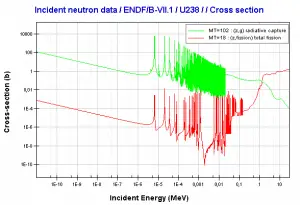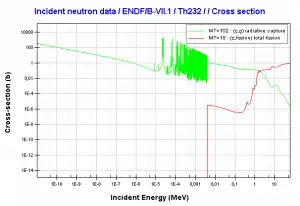- Fissile materials are a subset of fissionable materials.
- Fissionable material consists of isotopes that are capable of undergoing nuclear fission after capturing either fast neutron (high energy neutron – let say >1 MeV) or thermal neutron (low energy neutron – let say 0.025 eV). Typical fissionable materials: 238U, 240Pu, but also 235U, 233U, 239Pu, 241Pu
- Fissile material consists of fissionable isotopes capable of undergoing nuclear fission only after capturing a thermal neutron. 238U is not a fissile isotope because a thermal neutron cannot fission 238U. 238U does not also meet the alternative requirement to fissile materials. 238U cannot sustain a nuclear fission chain reaction because neutrons produced by the fission of 238U have lower energies than the original neutron (usually below the threshold energy of 1 MeV). Typical fissile materials: 235U, 233U, 239Pu, 241Pu.
- Fertile material consists of isotopes that are not fissionable by thermal neutrons but can be converted into fissile isotopes (after neutron absorption and subsequent nuclear decay). Typical fertile materials: 238U, 232Th.
See also: Neutron cross-section
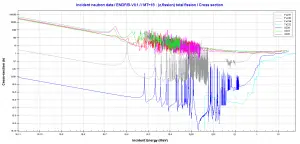
Source: JANIS (Java-based Nuclear Data Information Software)
http://www.oecd-nea.org/janis/

Source: JANIS (Java-based Nuclear Data Information Software)
http://www.oecd-nea.org/janis/
Comparison of cross-sections
Source: JANIS (Java-based nuclear information software) http://www.oecd-nea.org/janis/
Fissionable – Fissile
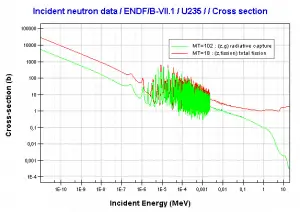
http://www.oecd-nea.org/janis/
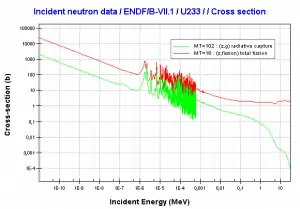
Source: JANIS (Java-based nuclear information software)
http://www.oecd-nea.org/janis/
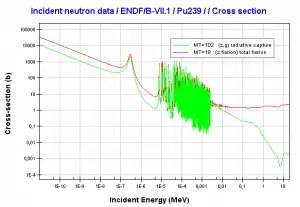
Source: JANIS (Java-based nuclear information software)
http://www.oecd-nea.org/janis/
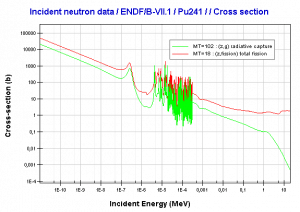
Source: JANIS (Java-based nuclear information software)
http://www.oecd-nea.org/janis/
